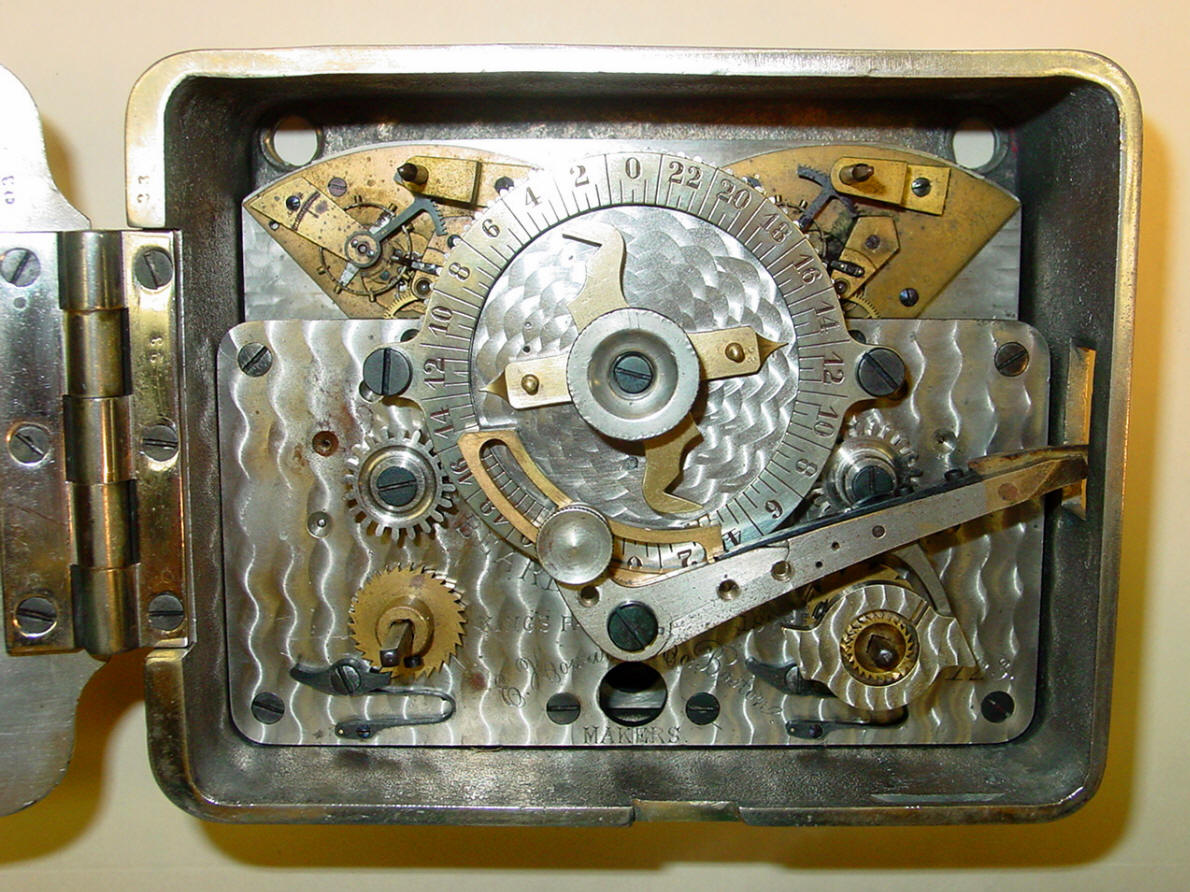|
Beard & Brother, St. Louis, Missouri, Type 2
Model - Type 2. 1878. This rare time lock was part of the first order of 25 movements made by Beard Brothers to the E. Howard Co. of Boston, Mass. in November of 1878. The principals, G. N. and E. J. Beard made their first time lock, the Model 1, in early 1878, it is unknown how many were produced, with only one known survivor today. The Model 2 was introduced later that same year. The Beard Brothers company made a total of 189 time locks until 1886 when the patent rights were sold to Mosler Safe Co., Hamilton, Ohio. The patent holder, Phinneas F. King joined the company as well. This explains the strong similarities of this and Mosler's first time lock. Later, Yale and Holms used a design similar to this where two movements are controlled by one dial. Five of this type are known to exist. (1) In April of 1887 Mosler placed an order of 100 of this model of time lock from Howard. The first 86 locks had the decorative damascening on the dial center. The later 14 did not and that design, along with some other minor changes to the dial, is the one adopted by Mosler in their order. Of the 175 Type 2 time locks Beard & Bros. ordered from E. Howard between 1878 and 1885, five are known to survive today. The three empty threaded holes appear to have been drilled at a later date. 5 3/4"w x 4 1/2"h x 2 5/8"d. Case #23, movement #123. file 102 Below are the drawings from the patent awarded to Phinneas F. King in connection with his work on bank vault time locks. At this time he was with the Beard Brother's firm which was bought out in 1886 by the Mosler firm,. Mr. King was also hired by the new firm and his patents were assigned to Mosler. As a result, Mosler's first model was very similar to King's design.
The advertisement below shows that Beard was also a safe maker as well as, breifly, in the time lock business. The illustration clearly shows one of their Type 2 time locks on the safe door. The case has a surface damascene similar to that used by Sargent & Greenleaf on their time locks, but no example of this case finish has ever surfaced. Notice the ad states there is no manual bolt work, or combination lock, "no hole through the door". This implies some sort of bolt motor to actuate the bolt work on the door to lock and unlock the door. Yet this is not evident on the drawing. Of course that may have simply been left out for convenience or to emphasize their time lock. An interesting side note is the way advertising claims were 'over the top' in this era. Perfect security against burglars and Acknowledged by bankers and all mechanical experts to be ahead of all the world for security. Well what could be better?
(1) American Genius Nineteenth Century Bank Locks and Time Locks, David Erroll & John Erroll, pp 206. |




